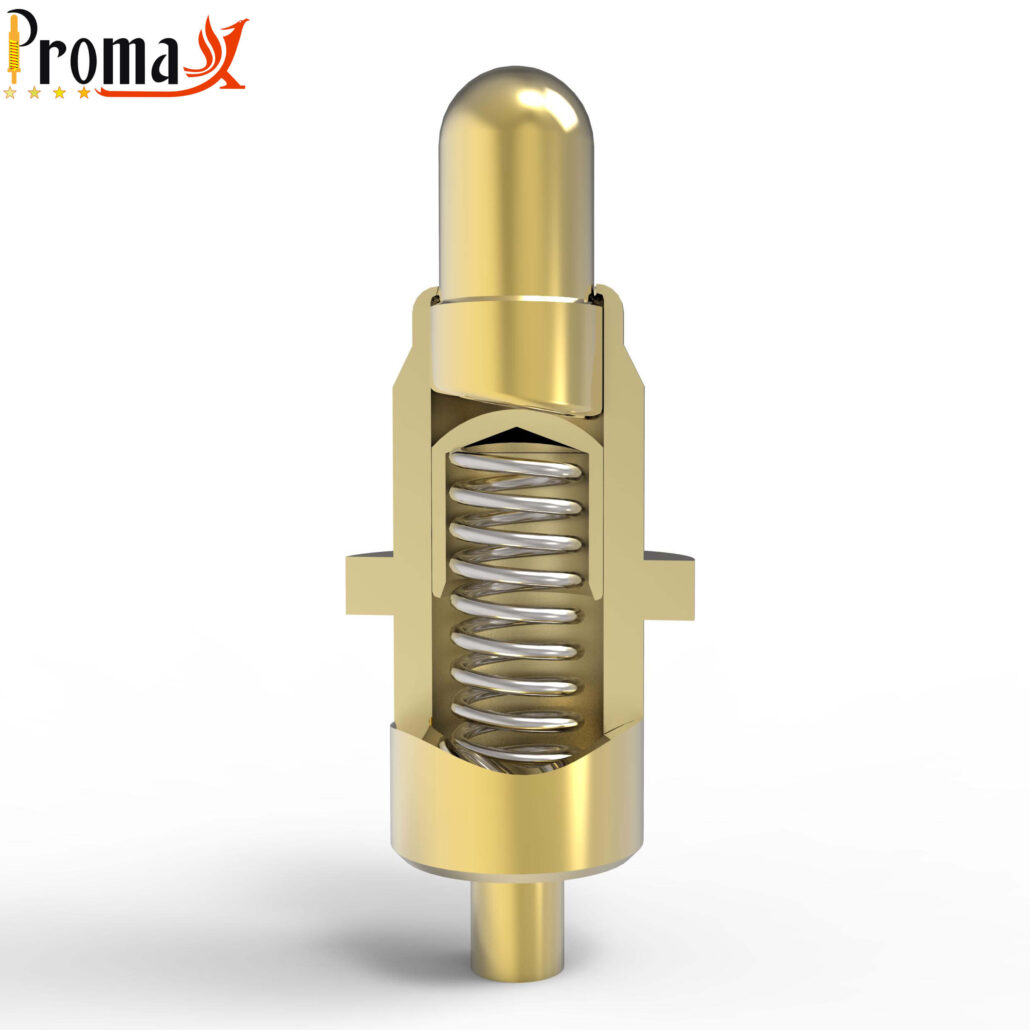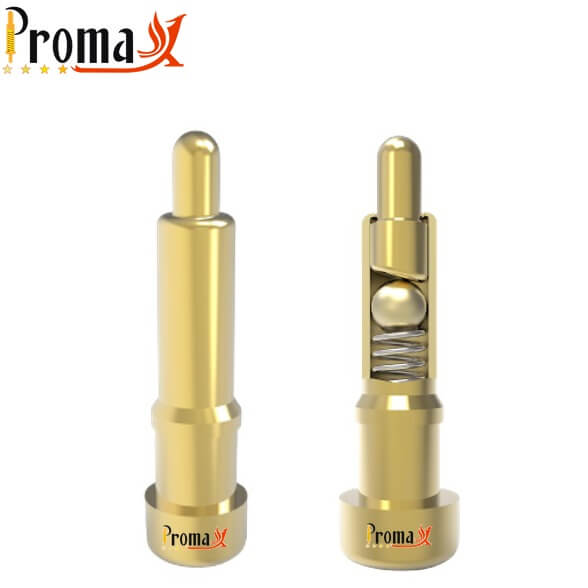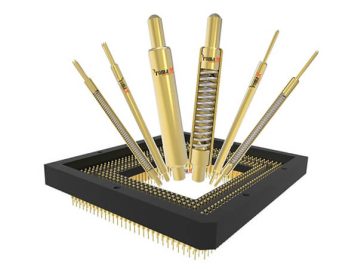Last Updated on January 5, 2024 by Tony
No wonder, in medical devices, reliable connections are the lifeline of innovation. Recent stats show that about 30% of medical device failures stem from connectivity issues. It clearly emphasizes the crucial need for solid connections in the medical field.
Enter non-magnetic pogo pins – a beacon of reliability in medical applications where precision is paramount. This article will explain their significance and growing importance in complex medical devices.
By the end, you’ll grasp the operational brilliance of non-magnetic pogo pins and why they’re becoming indispensable for seamless connectivity in critical medical devices. Let’s get in!
Understanding Non-Magnetic Pogo Pins
Non-magnetic pogo pins are connectors designed for signal or power transmission between devices, excluding magnetic properties. Unlike regular pogo pins, they are made from non-magnetic materials.
Working Principle
Non-magnetic pogo pins work through physical contact between two conductive components – a spring-loaded plunger and a mating socket. It ensures a reliable connection, even with slight misalignments or surface variations.
Components
Plunger
- Made from non-magnetic materials like brass.
- Compresses and retracts for reliable electrical contact.
Spring
- Integrated into the plunger.
- Provides constant force, compensating for variations.
- Usually stainless steel or non-magnetic materials.
Socket
- The counterpart to the plunger.
- Receives the plunger for electrical connection.
- Made from non-magnetic materials.
Insulating Housing
- Surrounds the plunger and socket.
- Prevents electrical contact with other components.
- Made from materials like plastic or ceramic.
Base or Mounting Structure
- Secures the pogo pins in the device.
- Non-magnetic materials ensure stability and alignment.
Types of Non-Magnetic Pogo Pins
- SMD (Surface Mount Device): Designed for surface mounting on circuit boards, offering space efficiency.
- DIP (Dual Inline Package): Ideal for through-hole mounting on circuit boards, providing stability.
- Right Angle: Suited for applications where a 90-degree connection is needed, accommodating space constraints.
- Double Head: Features two plungers for enhanced stability and conductivity.
- Solder Cup: Designed for soldering directly onto circuit boards, ensuring a secure connection.
- Screw Thread: Equipped with a threaded body for screwing into place, offering additional stability.

Magnetic vs Non-Magnetic Pogo Pins in Medical Devices
Magnetic Interference
- Magnetic Pogo Pins: May have magnetic materials, causing interference in sensitive medical devices like MRI machines.
- Non-Magnetic Pogo Pins: Crafted from non-magnetic materials (brass or alloys), eliminating interference for precise medical operations.
Compatibility with MRI Machines
- Magnetic Pogo Pins: Can distort MRI magnetic fields, compromising imaging quality and safety.
- Non-Magnetic Pogo Pins: MRI-safe, ensuring no interference with scans, crucial for devices near MRI equipment.
Material Composition
- Magnetic Pogo Pins: Traditional materials like iron or nickel alloys may cause magnetic issues in medical settings.
- Non-Magnetic Pogo Pins: Made from brass, phosphor bronze, or beryllium copper, ensuring no unwanted magnetic effects.
Reliability and Precision
- Magnetic Pogo Pins: Reliable where magnetic interference isn’t critical, but limited in sensitive medical environments.
- Non-Magnetic Pogo Pins: Offer interference-free reliability, ensuring precise device functioning and high-quality medical data.
Importance of Non-Magnetic Pogo Pins in the Medical Industry
The rise of non-magnetic pogo pins in the medical field addresses the vital need for an interference-free electromagnetic environment in diagnostic devices, especially those used in imaging procedures like MRI scans.
Avoiding magnetic interference is crucial for accurate medical data and patient safety. As medical tech advances, the demand for non-magnetic components, including pogo pins, grows to meet healthcare standards.
Magnetic vs Non-Magnetic Pogo Pins: A Quick Comparison
| Magnetic Pogo Pins | Non-Magnetic Pogo Pins | |
| Composition | Contains magnetic materials | Made from non-magnetic materials |
| Use of Magnetism | Leverages magnetism for alignment | Does not rely on magnetic properties |
| Applications | Docking stations, wearables, etc. | Sensitive medical devices, imaging equipment, precision instruments |
| Magnetic Interference | May introduce magnetic interference | Designed to minimize magnetic interference |
| Versatility | Suited for applications where magnetism is beneficial | Versatile, suitable for various medical applications |
| Examples | Magnetic docking interfaces, charging stations | Medical devices with sensitive electronics, diagnostic tools, implantable devices |
| Considerations | Considerable in applications where alignment is critical | Critical in applications where magnetic interference can disrupt sensitive equipment |
Advantages of Non-Magnetic Pogo Pins in Medical Devices
In medical device connectivity, non-magnetic pogo pins are not just a trend but a revolutionary force. These tiny components offer a trio of benefits, outperforming traditional magnetic counterparts. Let’s explore their advantages, starting with their crucial role in mitigating electromagnetic interference.
EMI Shielding and Magnetic Interference Elimination
Precision is paramount in the delicate dance of medical devices. Non-magnetic pogo pins act as guardians, providing unparalleled Electromagnetic Interference (EMI) shielding.
Picture a pacemaker regulating a heartbeat or a diagnostic machine interpreting critical data – any interference could be life-altering. These pins prevent disruptive electromagnetic signals, ensuring the precision and reliability vital to medical professionals and patients.
Biocompatibility
Beyond electromagnetic harmony, non-magnetic pogo pins extend their influence on the human body. Their biocompatibility minimizes the risk of adverse reactions to medical materials.
In an era of common implants and wearable devices, these pins foster a symbiotic relationship between technology and biology. Thus, they ensure connectivity without compromising the human system.
Durability and Longevity
Medical devices endure demanding environments, undergoing rigorous sterilization and countless mating cycles. Non-magnetic pogo pins meet this challenge with their unwavering durability.
They endure frequent connections, ensuring the longevity of medical devices that must withstand the test of time, from sterilization chambers to constant device usage.
Design Flexibility
Flexibility is the essence of innovation, and non-magnetic pogo pins embody adaptability in the medical device world. Their design flexibility allows for customization, meeting specific requirements.
Whether it’s an implantable device fitting into human anatomy or a wearable seamlessly integrating into daily life, these pins adapt to unique applications. This flexibility catalyzes groundbreaking designs, pushing the boundaries of what medical devices can achieve.
Applications of Non-Magnetic Pogo Pins in Medical Devices
Non-magnetic pogo pins are a game-changer in medical devices, offering versatile connectivity solutions across various healthcare applications.
Implantable Medical Devices
Ideal for precision-driven implantable devices like neurostimulators and cardiac implants, non-magnetic pogo pins ensure secure connections within the human body. Their non-magnetic nature minimizes interference, ensuring reliable functionality for life-altering implants.
Wearable Medical Devices
In health tech, non-magnetic pogo pins play a crucial role in wearables, facilitating efficient data transfer between sensors and control units. Their durable design withstands constant movement, providing a reliable connection for continuous health monitoring.
Diagnostic Medical Devices
Critical for diagnostic equipment like imaging machines and blood analyzers, non-magnetic pogo pins establish reliable connections, contributing to the seamless operation of diagnostic tools. Their non-magnetic properties prevent interference, ensuring accurate medical assessments.
Therapeutic Medical Devices
Indispensable in therapeutic applications, non-magnetic pogo pins enable secure connections in devices such as drug delivery systems, ensuring precise administration of therapeutic agents.
Their durability and non-magnetic properties make them ideal for devices impacting patient well-being.
Other Medical Applications
Non-magnetic pogo pins, known for their adaptability and reliability, are utilized in diverse medical devices such as infusion pumps and surgical robotics. Their non-magnetic properties prove crucial in situations where magnetic interference could jeopardize the essential functionality of medical equipment.

Selecting the Right Non-Magnetic Pogo Pins for Medical Devices
In medical device engineering, choosing non-magnetic pogo pins is a critical decision shaping product performance. Let’s explore the essential factors for a savvy selection:
Pin Size
Pin dimensions are crucial for integration and form factor. Assess available space and device requirements for seamless integration, ensuring optimal performance.
Material Composition
The material matters. Opt for materials like stainless steel, balancing conductivity, corrosion resistance, and mechanical strength for durability in medical applications.
Plating
Surface finish matters for conductivity and longevity. Gold plating is common, but specific device needs may warrant alternative options. Consider the use and environment for the right plating choice.
Spring Force
Critical for consistent electrical contact, spring force influences device reliability. Balancing secure connections with delicacy is key for optimal performance.
Compatibility
Align pogo pins with device requirements. Match electrical needs, environmental conditions, and expected lifespan to ensure seamless functionality and reliability.
Consulting Experts
In the intricate world of non-magnetic pogo pins, seek guidance from experienced manufacturers like PromaxPogoPin.com. Their expertise ensures a perfect alignment of chosen components with the demands of the medical device industry.
Future Outlook for Non-Magnetic Pogo Pins in Medical Devices
Looking ahead to the future of medical device connectivity, non-magnetic pogo pins stand out as transformative. Technological advancements and their applications position these pins as crucial in shaping the next generation of medical devices.
Evolving Trends and Advancements
Miniaturization and Integration
Non-magnetic pogo pins excel in the miniaturization trend of medical devices, offering precision and reliability in compact designs.
Material Innovations
Ongoing research explores materials with enhanced conductivity, durability, and non-magnetic properties, pushing the boundaries of non-magnetic pogo pin performance.
Wireless Integration
Adapting to the shift toward wireless connectivity, non-magnetic pogo pins with wireless capabilities enable cable-free communication, enhancing flexibility in medical applications.
Emerging Applications and Potential Growth Areas
Telemedicine and Remote Monitoring
Non-magnetic pogo pins facilitate seamless data transmission from wearable and implantable devices to healthcare providers, supporting the rise of telemedicine and remote patient monitoring.
Neurostimulation Devices
In neurostimulation for conditions like Parkinson’s disease, non-magnetic pogo pins provide reliable connectivity, contributing to the growth of this critical medical field.
Surgical Robotics
Essential to connectivity in surgical robotics, non-magnetic pogo pins meet the demand for reliable and precise connections as the field experiences rapid growth.
Forward-Looking Perspective
Envisioning the future, non-magnetic pogo pins catalyze innovation in medical device technology. These pins epitomize seamless connectivity, reduced interference, and enhanced reliability, aligned with the smart and patient-centric healthcare trend.
The next generation of medical devices is poised for qualities embodied by non-magnetic pogo pins. As these pins advance, they set new standards, elevating the capabilities and dependability of healthcare devices.

Conclusion
In the evolving world of medical device connectivity, non-magnetic pogo pins take center stage. These tiny connectors aren’t just components; they’re catalysts transforming healthcare.
Non-magnetic pogo pins redefine medical device performance, ensuring reliable, precise, and interference-free connectivity. From diagnostic tools to implantable devices, they set new standards.
As we embrace innovation, non-magnetic pogo pins pave the way for seamlessly integrated medical devices. They enhance patient care, propelling advancements in healthcare technology.
Your Partner in Precision: Promaxpogopin.com
For top-notch non-magnetic connectors meeting medical device standards, connect with Promaxpogopin.com. Elevate your designs with precision, reliability, and cutting-edge technology. Start your journey to enhanced performance and safety today.










